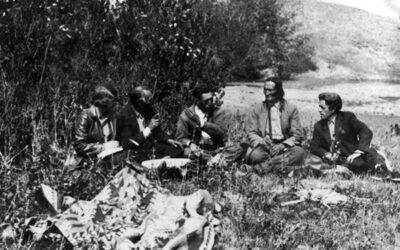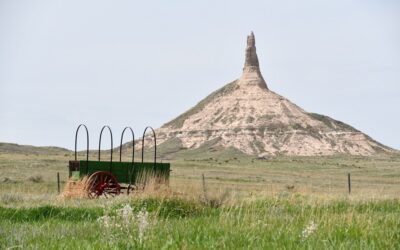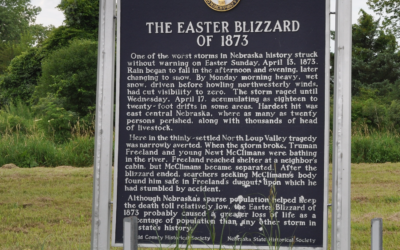By David L. Bristow, Editor; video by Josh Beeman
In 2019, Nebraskans celebrated the 150th Nebraska State Fair in Grand Island. Here are some of our favorite state fair photos from the collections of History Nebraska from the first century or so of the fair–in a two-minute video linked above and photos and captions below.
Can you name the fair’s five host cities, and the two years the fair was canceled? Nebraska City hosted a three-day territorial fair in 1859, and the first two state fairs were held there in 1868 and 1869.
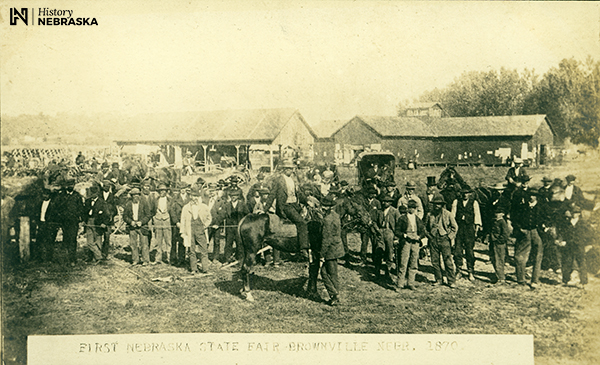
Nebraska State Fair in Brownville, 1870. This was the first fair in Brownville, but the third state fair overall. HN RG 2304-3-6
Brownville hosted for a few years, then Omaha and Lincoln switched back and forth until Lincoln became the fair’s longtime home from 1901 to 2009. Grand Island has been the host city since 2010.
No fair was held in 1898 because host city Omaha was putting all its efforts into its Trans-Mississippi and International Exposition, a World’s Fair-type event. And the US government suspended fairs in 1945 due to World War II.
From the beginning, fair promoters disagreed as to whether the fair was primarily about education or entertainment. In 1868, future Nebraska governor Robert Furnas of Brownville scolded readers of the Nebraska Advertiser: “Don’t go into sideshows to see fat women, or a calf with two heads and eight legs, or any other monstrosities; but look at the stock, examine the points and make note of where you can purchase a fine Short Horn or Chester White, or any other desirable stock.” At a time when the great majority of Nebraskans were farmers, Furnas believed that the fair’s main purpose was to improve people’s lives by improving agriculture.
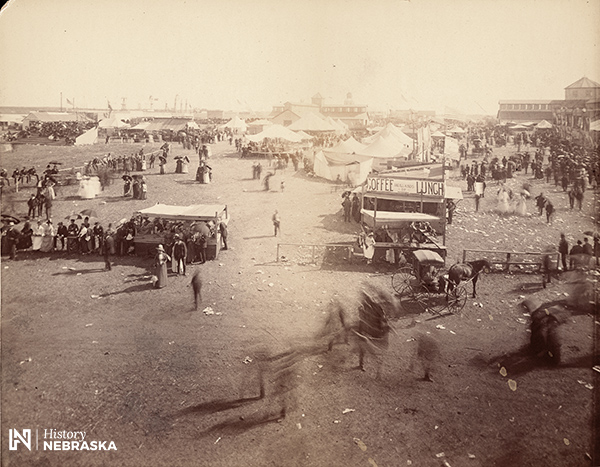
The fairgrounds in Lincoln in 1888. The widespread use of trash receptacles was still in the future. HN RG3356-3-3
Meanwhile, gambling and liquor were allowed at the fair until 1879, and early newspapers complained of “indecent shows.” The popularity of horse races, entertainers, and carnival-style midways may have disappointed the purists, but the fair relied on the big crowds those events drew.
Even Furnas acknowledged that the fair offered “a week of recreation for every family,” and that “it happens on many farms that there is really no let up,” making it hard to get away. By the time they arrived at the fairgrounds, in other words, most Nebraskans believed they’d earned the right to enjoy themselves.

A building made of alfalfa, Omaha, 1895. HN RG3356-49-2
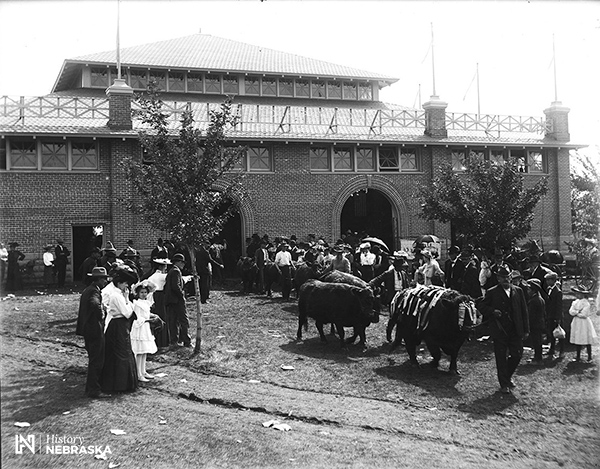
Prize cattle, including one literally covered with ribbons, 1907. HN RG3356-0-747
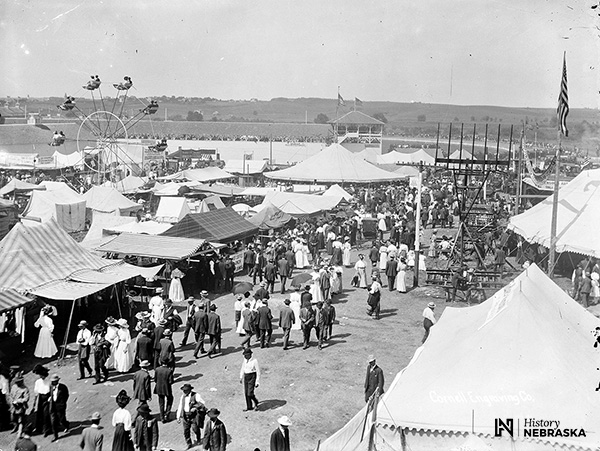
Midway, 1909. HN RG3356-0-784
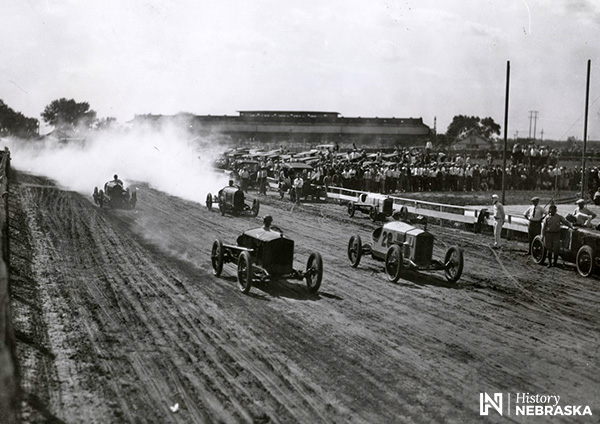
Auto racing at the grandstand, 1914. HN RG3356-0-1-2
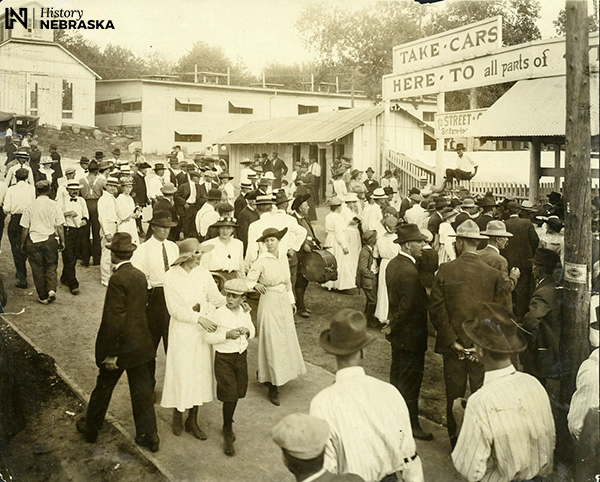
Ties, long sleeves, and long skirts (though getting shorter), circa 1918. HN RG3356-5-21
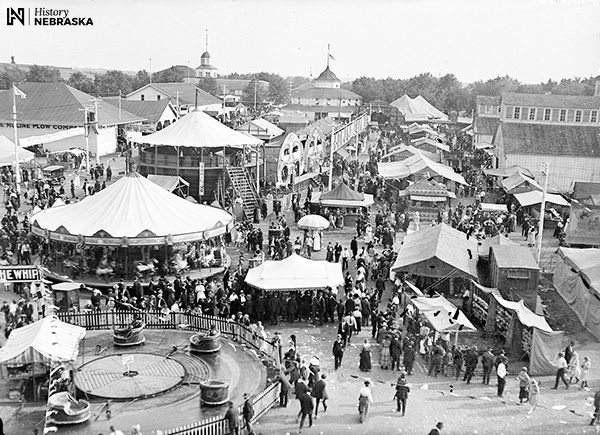
Lincoln, 1920.
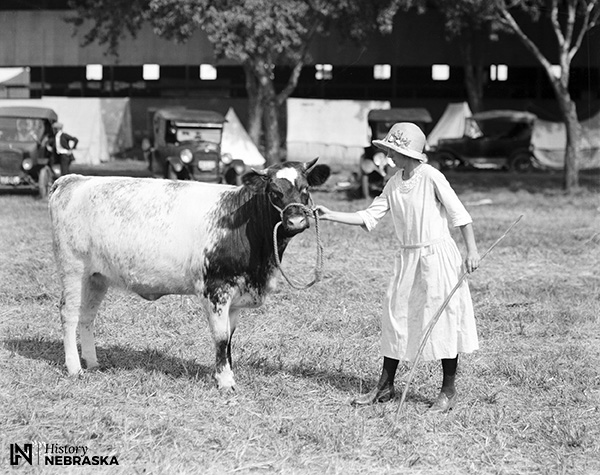
Beatrice Simmons of Cozad, 1st Heifer Calf Club, 1924. HN RG3356-22-4
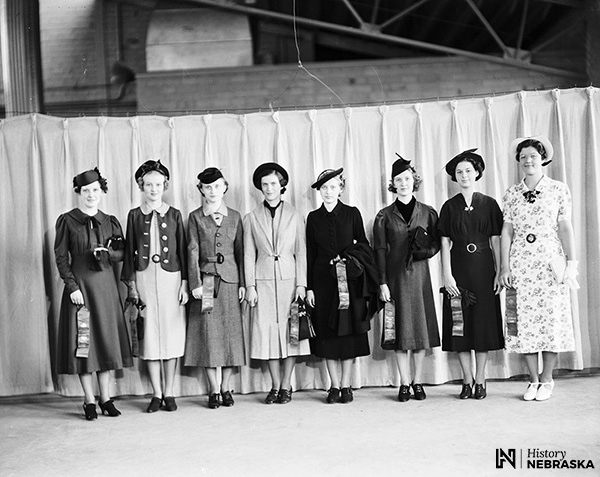
The blue ribbon winners of the 4-H Style Show at the 1937 Nebraska State Fair. HN RG3356-62-83
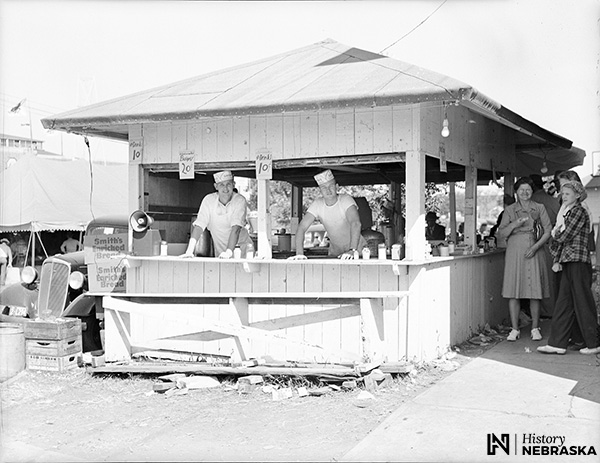
You can’t have a fair without fair food. Hamburger stand, 1946. HN RG2183-1946-904-1
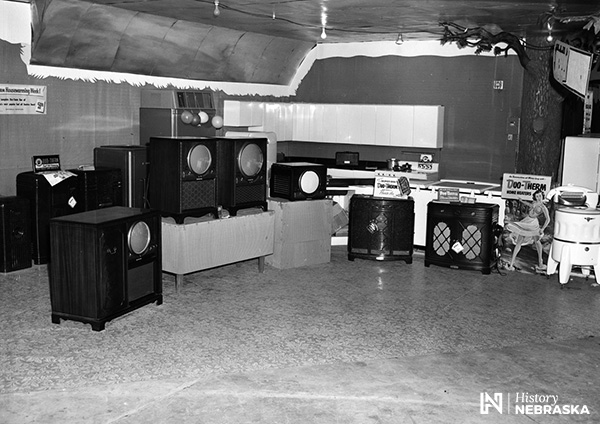
The latest consumer products on display–televisions in 1949. HN RG2183-0-1049-9083
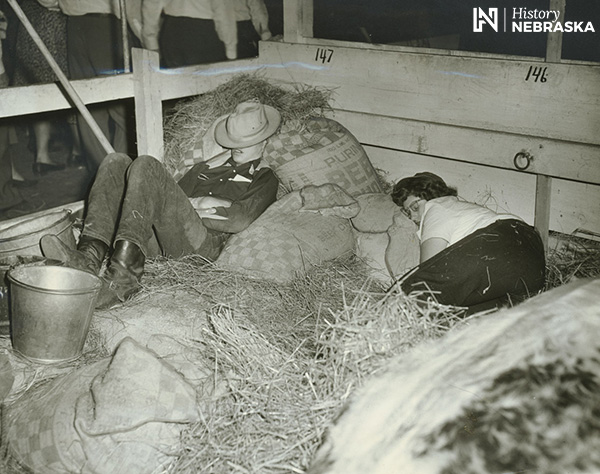
Cousins Allen Runge and Mary Runge, nap in a stall after busy day tending livestock at the 1950 fair. HN RG1783-34-11

Outside the burlesque theater, 1956. HN RG4107-2-66
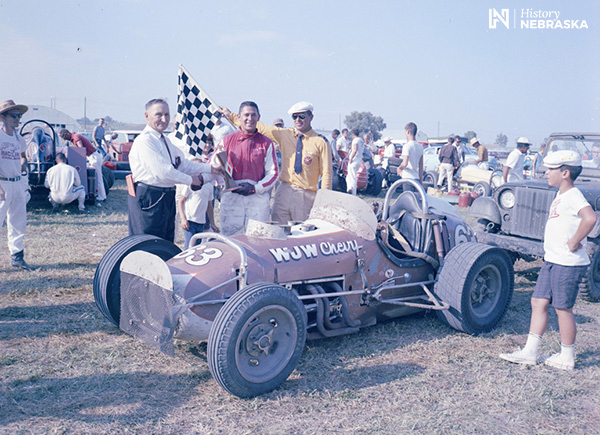
Sprint car, 1962. HN RG5705-24-2
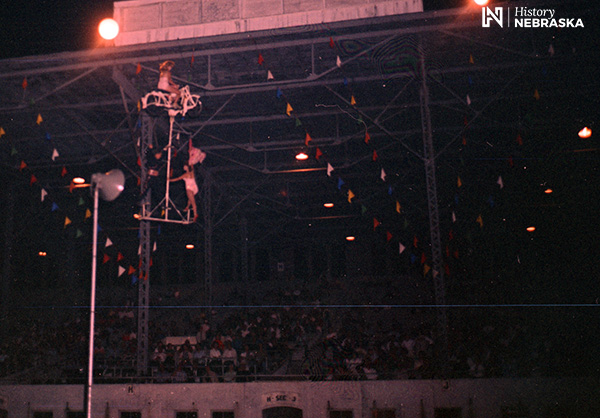
A “Thrillcade” acrobatic performance in front of the grandstand in 1963. HN RG5705-23-40
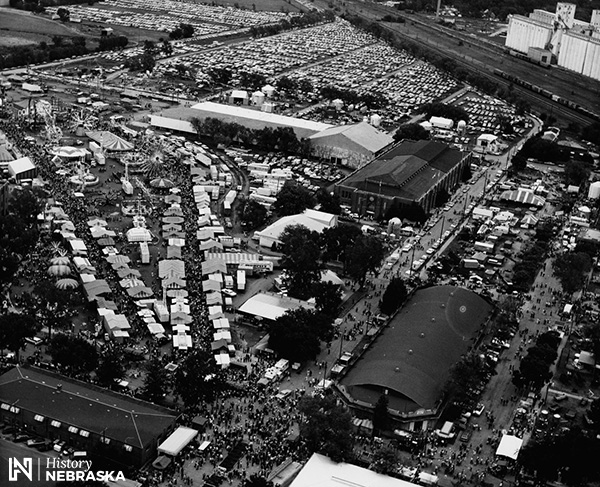
Fairgrounds in 1972. HN RG3356-38-18

